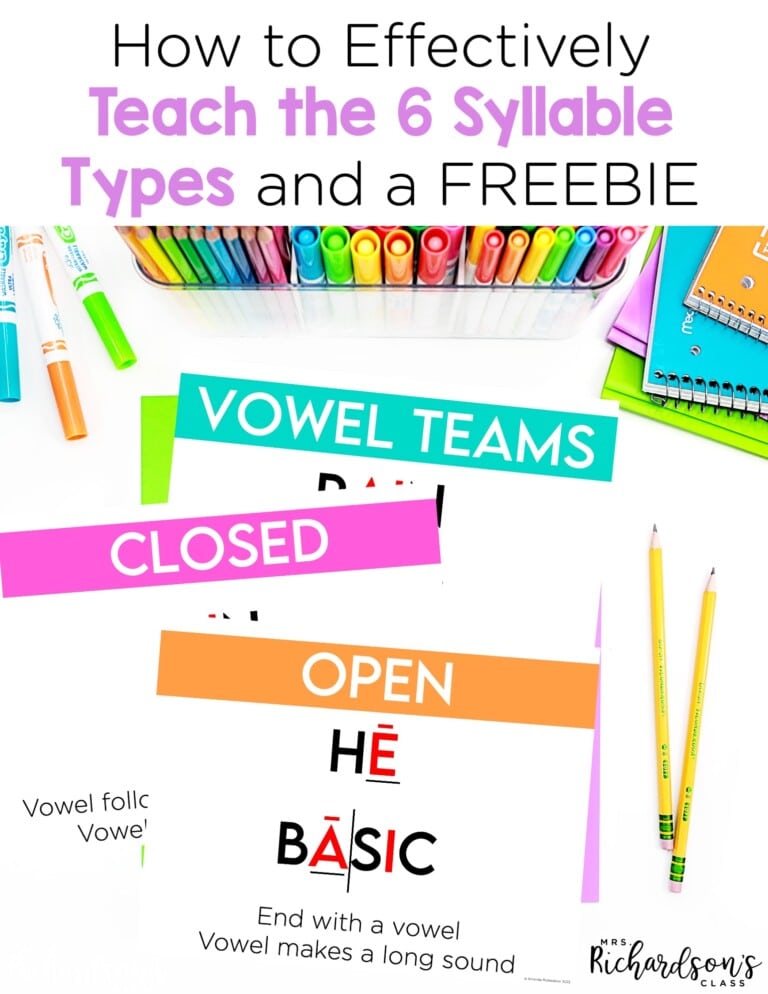


You have crafted the perfect guided reading lesson plan. You gather all of the materials and lay them out neatly. But, the next thing you know, the first group’s time is already up and you barely made it halfway through.
Fitting it all in can be tough! There are multiple components of a guided reading lesson, and each one is important and powerful. You worked so hard planning and preparing your lesson, and we want to make sure you get to implement each part of it. Understanding the guided reading schedule and structure will help you master your 20-minute lesson cycle. Use these tips to help you with your schedule to make the most out of your time.
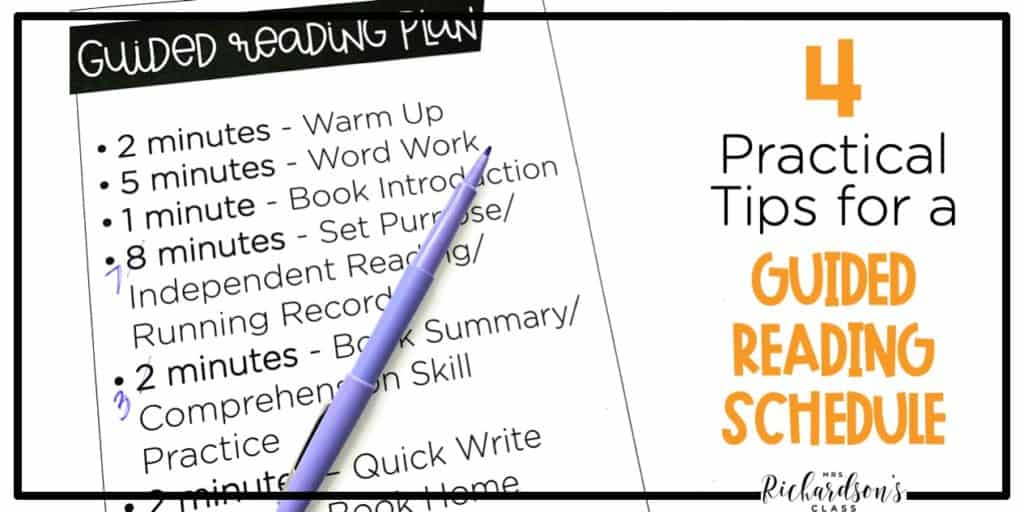
Take a moment and write out the recommended guided reading schedule. You can find what it should look like on my Structuring a Guided Reading Lesson post. If you’d rather watch a video version, check out the free videos HERE and HERE about the structure and schedule of a guided reading lesson. Write out how many minutes you’d like to spend on each component:
You might even want to write how many minutes each component will be right on your lesson plan. Going back and paying close attention to what a full lesson schedule should look like can be a great refresher!
Every once in awhile, I even like going back to writing full, scripted lesson plans to practice including everything I need to. I used to find myself slowly morphing guided reading further and further off-track. But, a scripted plan really kept me focused and retrained my brain. Keep an eye on your written schedule for a few days to help train yourself to stick to it. (You can grab your own scripted guided reading lesson plans for kindergarten and first grade in my TpT shop.)
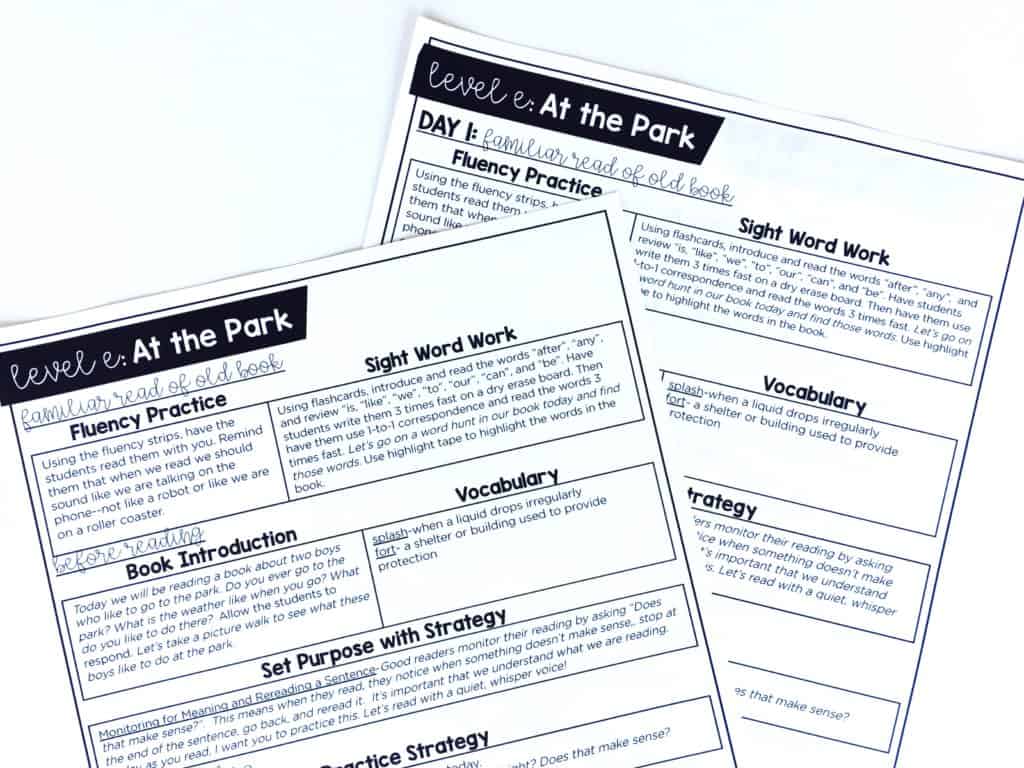
Use the timer app on your phone or grab an old fashioned timer, but keep one accessible on your table. I love setting my phone timer because I can set several timers to keep me on track. You could set three simple timers:
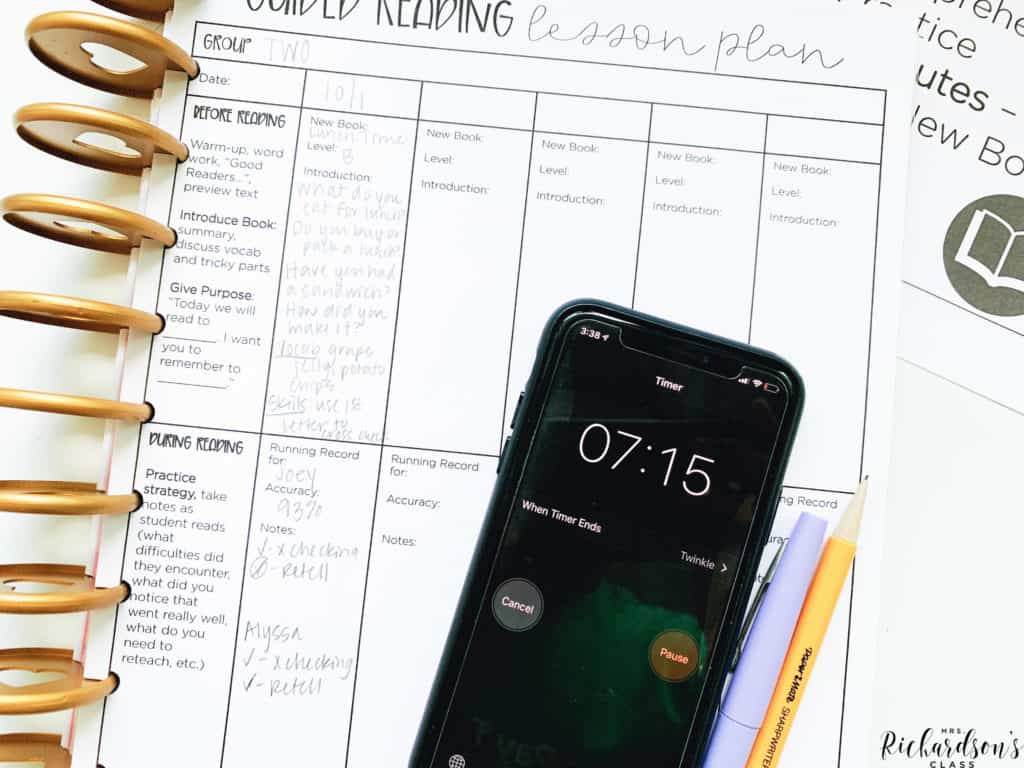
Practice using a timer for a week, which adds up to about 15 lessons. Or, if time management is not one of your strengths, just plan to always use one. Whatever works! But one week or so of paying close attention to the clock will help you get a better feel of the flow of the lesson cycle.
If you’ve tried the first two tips and still struggle to include an element or two, try moving it to the beginning of the lesson if possible. You can also try moving that element to right before reading. Just grab the guided reading schedule you wrote out, insert that element in, and try it. This will help prevent you from avoiding or skipping this part.
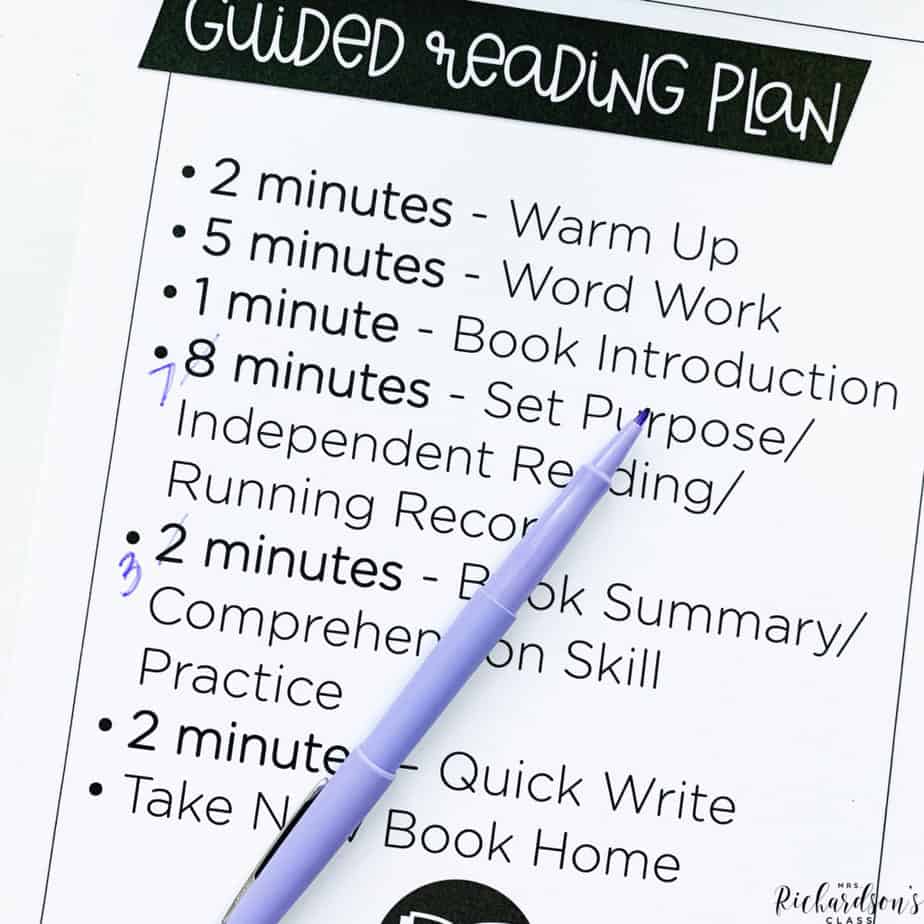
As I’ve been coaching teachers online and during PD sessions, I’ve noticed that many tend to skip a component unintentionally because they don’t feel confident with that part. Make yourself practice by moving it up until you feel more comfortable with it.
If this is the goal of guided reading, then we must include time for our students to read and practice the strategies they have learned in an authentic way. While our students are reading, the teacher is checking for comprehension, fluency, and accuracy. This is the heart of guided reading. Keep an eye on the clock. If you get to the halfway mark, do your brief book introduction and have your students start reading.
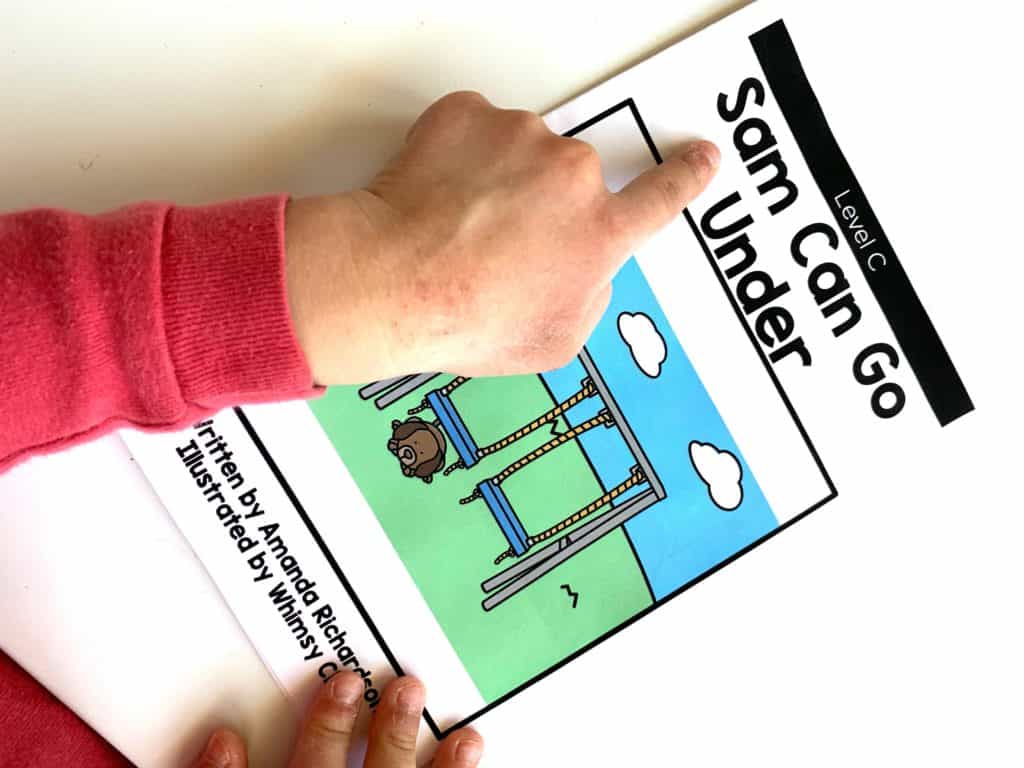
Creating the best guided reading schedule, preparing your materials, and knowing your students will help you make the most out of your guided reading time with each group. Don’t let the many elements of guided reading make you feel flustered or overwhelmed. Try these tips to fit it all in.
If you still struggle, you can always leave me a comment below. I’ll try my best to help!
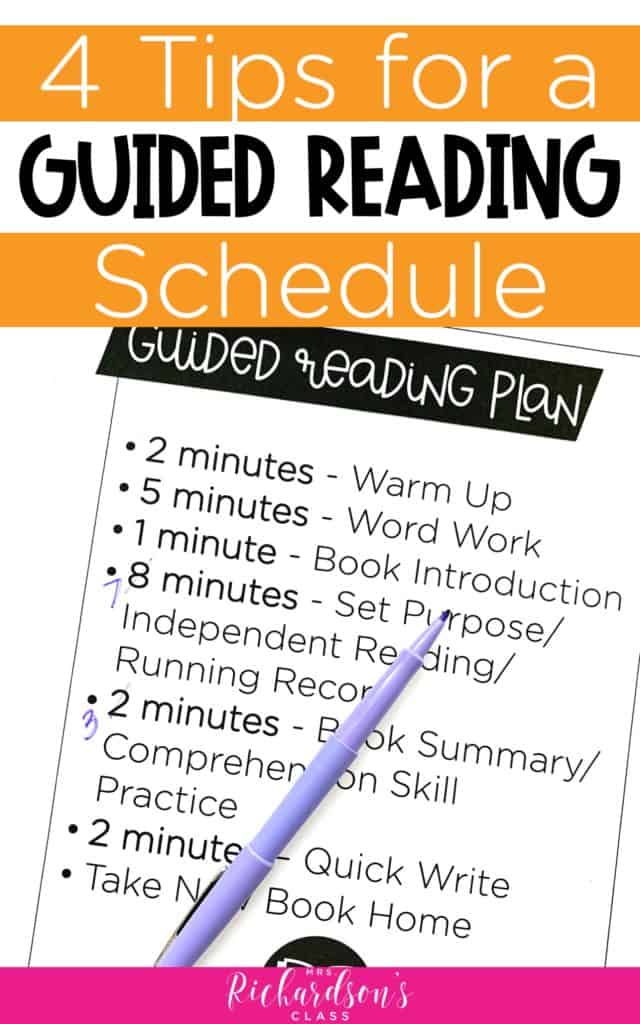
pin it

Want to use the latest research to boost your readers during small groups? This FREE guide is packed with engaging ideas to help them grow!

I’m a K-1 teacher who is passionate about making lessons your students love and that are easy to implement for teachers. Helping teachers like you navigate their way through their literacy block brings me great joy. I am a lifelong learner who loves staying on top of current literacy learning and practices. Here, you’ll find the tools you need to move your K-2 students forward!


| Cookie | Duration | Description |
|---|---|---|
| cookielawinfo-checkbox-analytics | 11 months | This cookie is set by GDPR Cookie Consent plugin. The cookie is used to store the user consent for the cookies in the category "Analytics". |
| cookielawinfo-checkbox-functional | 11 months | The cookie is set by GDPR cookie consent to record the user consent for the cookies in the category "Functional". |
| cookielawinfo-checkbox-necessary | 11 months | This cookie is set by GDPR Cookie Consent plugin. The cookies is used to store the user consent for the cookies in the category "Necessary". |
| cookielawinfo-checkbox-others | 11 months | This cookie is set by GDPR Cookie Consent plugin. The cookie is used to store the user consent for the cookies in the category "Other. |
| cookielawinfo-checkbox-performance | 11 months | This cookie is set by GDPR Cookie Consent plugin. The cookie is used to store the user consent for the cookies in the category "Performance". |
| viewed_cookie_policy | 11 months | The cookie is set by the GDPR Cookie Consent plugin and is used to store whether or not user has consented to the use of cookies. It does not store any personal data. |
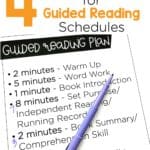
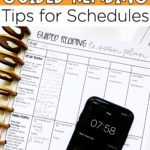
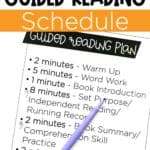
2 Responses
Is the GR planning page in your store?
Hi Lori! The page you see under the #2 tip is part of my guided reading binder. You can find that here. https://www.teacherspayteachers.com/Product/Guided-Reading-Binder-EDITABLE-300964 🙂